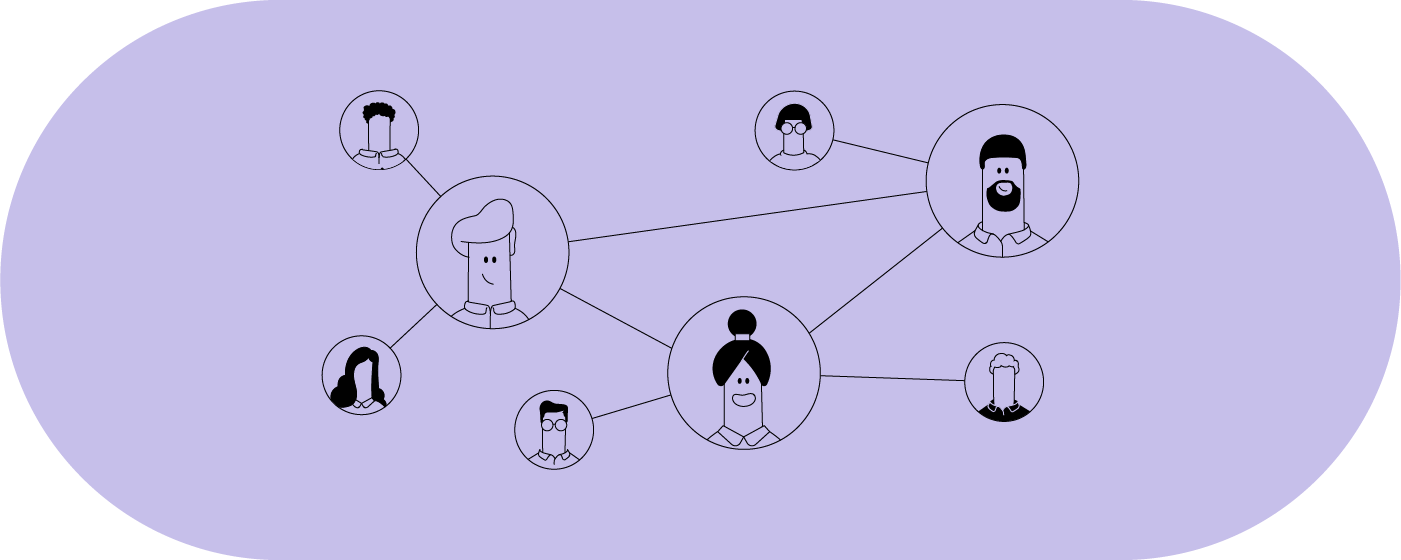Project stakeholders are probably the most important people who will determine your project's success or failure. However, sometimes project managers are too preoccupied with the project's scope, quality, budget, and timelines to pay attention to stakeholders.
Failing to treat stakeholders properly can lead to unnecessary delays or cost overruns, which can affect your project in a bad way. Additionally, if you don't manage your stakeholders well, they can become roadblocks instead of partners in project implementation.
When stakeholders feel overlooked, they lose interest in the project. So, in this article, we will show you how to implement effective stakeholder management successfully.
Stakeholders in a project
Identifying stakeholders in project management shouldn't be too challenging! They are all those individuals impacted by the project. Another popular definition states that a stakeholder is a person who has an interest in a given project. So, this leads to the conclusion that everyone affected by the project outcome is a stakeholder.
There are two types of stakeholders, internal and external. Some external stakeholders are the project management board, a project sponsor, a department, an external like the government, or even third-party providers. Keep in mind that stakeholders are key players, and they can either boost your business or cause its downfall. You can visually put them all on the same page in a process called stakeholder mapping.

Managing stakeholders comes down to creating a long-term relationship based on trust, customer satisfaction, and integrity. Depending on how you deal with this relationship, your business can experience exponential growth or slow decline.
Stakeholder roles
Project stakeholders' roles and responsibilities depend on the organization and the particular project they are involved in. Since we know there are two types of stakeholders, their roles significantly differ. The stakeholder register contains all their crucial information, such as name, title, and role. In most cases, internal stakeholders have a financial interest in the organization, including investors, the board of directors, and shareholders.
It is often said that internal stakeholders have a vested interest in the company's success because they are financially involved.
On the other hand, external stakeholders haven't invested any organizational or personal funds. Therefore, they don't vote on the company's decisions. However, they can present new ideas and decisions to the board of directors to review or comment on. The role of external stakeholders often reflects the environmental concerns, government, or community.
Identifying stakeholders in a project
You need to put in significant effort to identify project stakeholders on time. It would be best to prioritize stakeholders based on their vested interest in the project and their influence on the project. This entire process begins when your sponsors approve the project. There are a couple of steps to help you identify stakeholders in a project:
- Review the environmental and enterprise factors: enterprise environmental factor, or EEF, may include information like industry standards, company structure, and competition.
- Ask questions: going through different ideas is an excellent way of getting stakeholders involved.
- Interview the influences: interviewing key influences and experts can also be one of the primary things in identifying stakeholders.
- Project chapter: it identifies the influences, clients, key sponsors, and project head.
Stakeholder management process
The stakeholder management process includes improving, monitoring, and organizing your relationship with stakeholders. It means you systematically identify stakeholders, analyze their needs and expectations, and plan and implement different tasks to boost their engagement.
Successful stakeholder management will help you coordinate your interactions and evaluate the quality and status of your relationship with various stakeholders.
The majority of definitions of stakeholders tend to focus on an idea that you can manage your stakeholders, meaning to get them to do what you want. It also indicates you should create a stakeholder management plan to identify the influence and interest of stakeholders and their engagement level.
Stakeholder management principles
According to Max Clarkson, who was a well-established researcher on stakeholder management, there are seven principles:
- Acknowledge: actively monitor and acknowledge stakeholders' concerns and take them into account when making decisions.
- Listen: openly communicate and listen to stakeholders about their contributions and concerns. Talk about the risks they assume due to their involvement with the organization.
- Adopt: managers should adopt methods and processes that meet the capabilities and concerns of every stakeholder.
- Recognize: recognize their independence and reward your stakeholders' efforts. You should distribute benefits among them while dividing corporate activity.
- Cooperate: managers should cooperate with other private and public entities to minimize all risks and harms.
- Avoid: you should find ways to bypass or avoid all the activities that will jeopardize human rights.
- Acknowledge conflict: managers need to acknowledge potential conflicts between their role as corporate stakeholders and their moral and legal responsibilities.
Building relationships with stakeholders
One of the first steps in building a relationship with stakeholders is understanding who they are. Many projects fail because managers have a hard time identifying or engaging all stakeholders.
The next step would be to determine stakeholders who have a high level of power and influence. For instance, if you are leading a large project, you won't have enough time to chat with every stakeholder individually.
That's why it's important to assess the most impactful stakeholders, people who will help you move forward and define your project. Make sure your relationship with them is impeccable.

Building a great relationship with someone isn't about the amount of time you spend with that person, but it's about the quality of that time. You should know by now that good relationships are created in one-to-one conversations.
Stakeholders are busy people, so keep your discussions short and come prepared. Let them know that's the purpose of your meeting.
Also, try to understand your stakeholders' world because that's the only way they will trust you. If you wish to deepen this level of trust, make sure you communicate with honesty and clarity.
Why do stakeholders matter?
Stakeholders are a vital part of any organization or company because they assist you in planning for the future. Additionally, stakeholders may often share the same needs as you do, while their buy-in might help you influence senior leaders.
Stakeholders will empower people and get them to make decisions. Also, engaged stakeholders will help with decision-making and support your needs for long-term sustainability. Last but not least, stakeholders will build new relationships and foster the existing ones.
The importance of involving stakeholders
Stakeholders have plenty of knowledge and are familiar with the current processes, industry insight, and historical information. More often than not, they have been longer at the company than a project team or the project manager. That's why it's crucial to involve all stakeholders to avoid missing major deliverables.
Keep in mind that the more stakeholders you involve, the more you will uncover and minimize the risks on your projects. Moreover, by reviewing and collecting project requirements with stakeholders, you will receive their buy-in, eventually increasing the project's success.
Last but not least, if your stakeholders are regularly included in the project, you can expect a positive conclusion because they are already familiar with risks and expectations.

